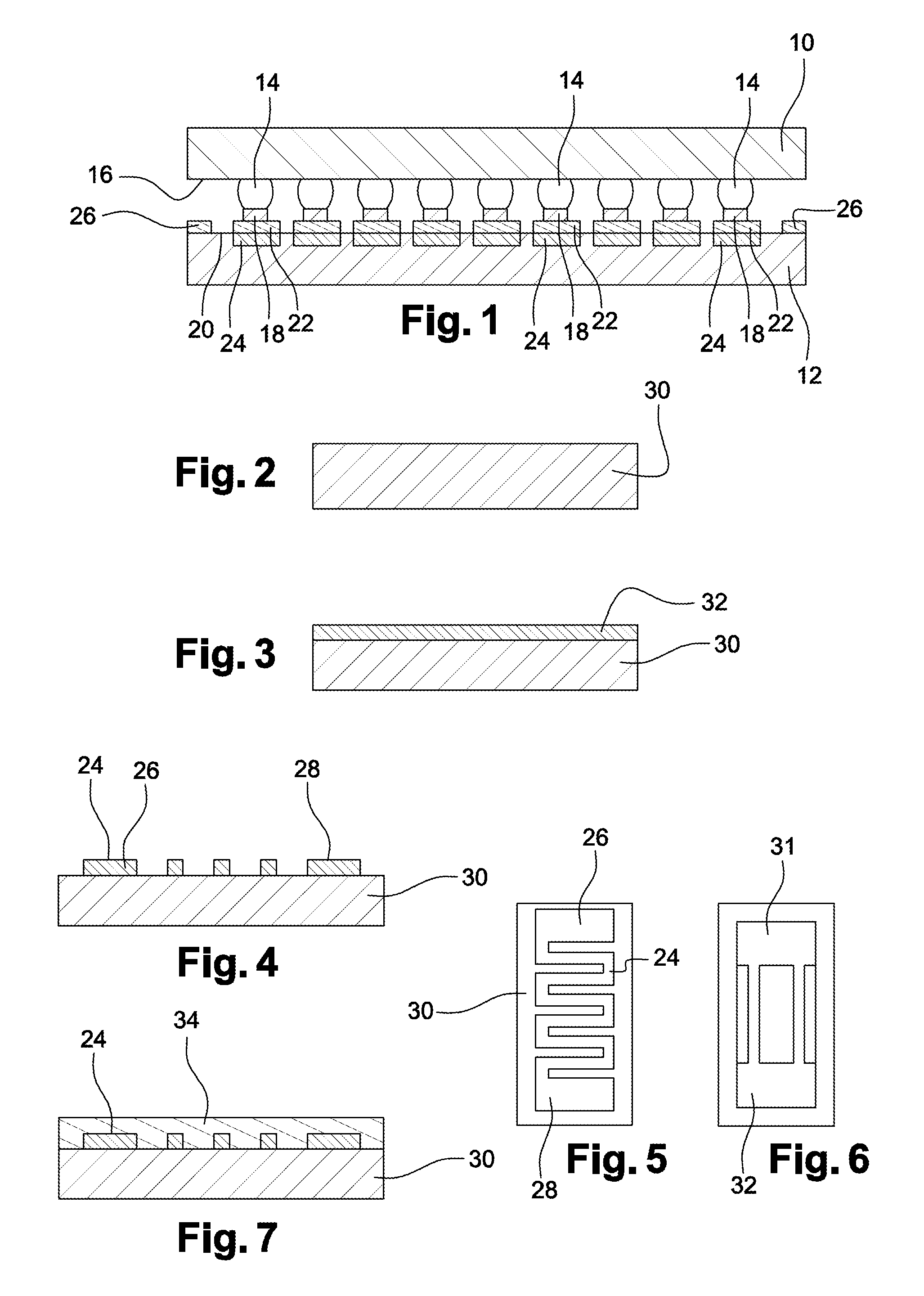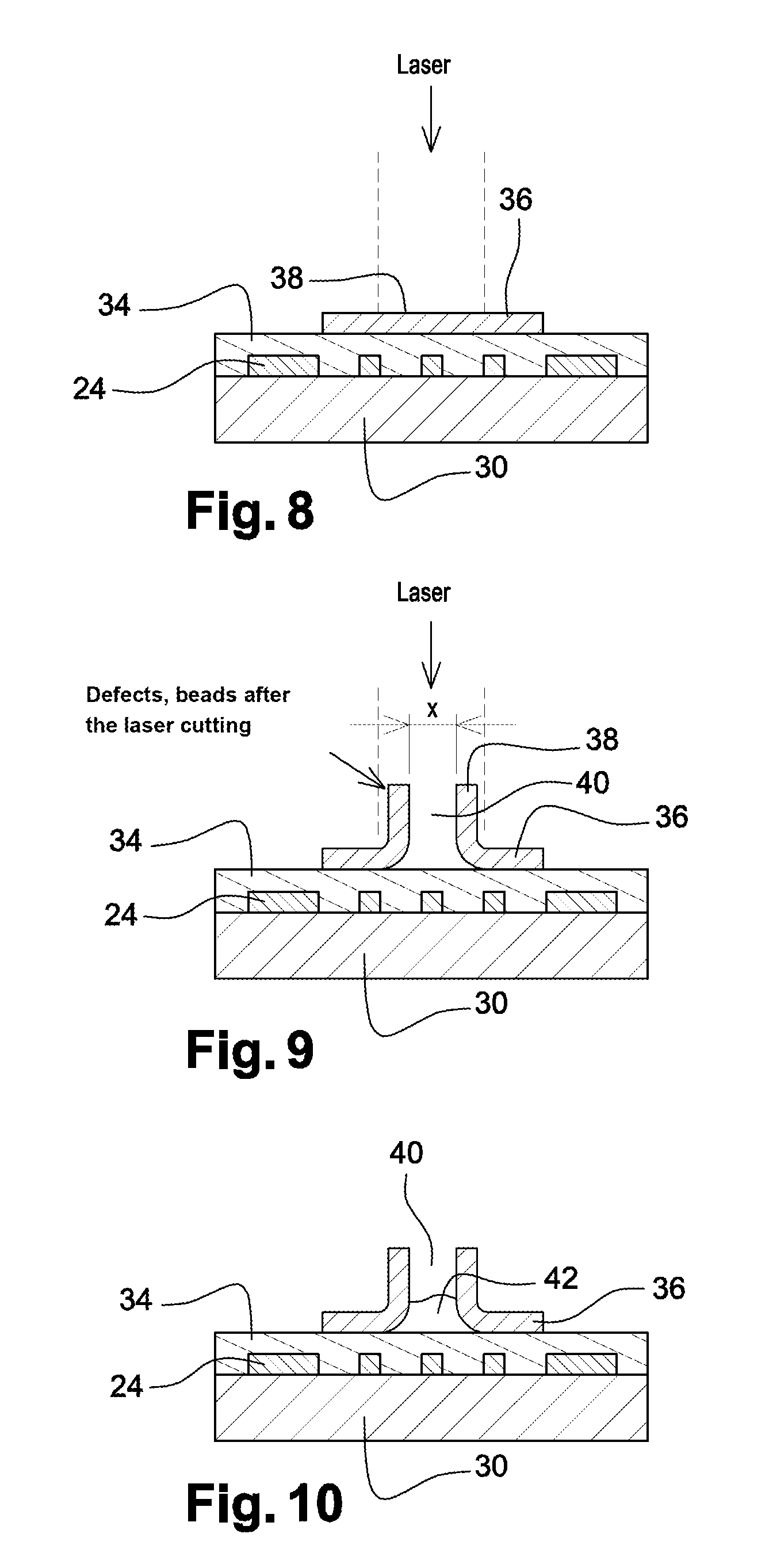Flip-chip hybridization of microelectronic components by local heating of connecting elements
a technology of connecting elements and microelectronic components, applied in the field of flip-chip hybridization, can solve the problems of not being able to separate the two hybridized components, the plastic component takes a rubbery state, is even destroyed, and cannot be compatible with organic components, etc., to achieve high photonic energy input, reduce unwanted thermal effects, and reduce the effect of heat loss
- Summary
- Abstract
- Description
- Claims
- Application Information
AI Technical Summary
Benefits of technology
Problems solved by technology
Method used
Image
Examples
first embodiment
[0049]A method for manufacturing the device just described according to the invention will now be described in further detail in relation with FIGS. 2 to 12.
[0050]The method starts with the manufacturing of a substrate 30 of second component 12 (cross-section view of FIG. 2). Substrate 30 is for example a flexible plastic substrate particularly made of PET or of PEN, a silicon substrate comprising microelectronic circuits, or the like.
[0051]A metal layer 32 is then deposited full plate on a surface of substrate 30, for example, by evaporation or sputtering (cross-section view of FIG. 3). Layer 32 is for example a gold, titanium, nickel, copper, or tungsten layer and has a thickness in the range from 30 nanometers to 300 nanometers, to keep the flexibility of substrate 30 by limiting the effects of the difference between the thermal expansion coefficient of substrate 30 and that of metal layer 32.
[0052]Layer 32 is then etched to form resistive elements 24. The shape of elements 24 is...
second embodiment
[0067]A manufacturing method according to the invention will now be described in relation with FIGS. 13 and 14.
[0068]This method for example starts identically to the steps of the first embodiment described in relation with FIGS. 2 to 8. Unlike the first embodiment, the method carries on with the direct deposition of ink 42 on metal areas 36 with no forming of well 40 (cross-section view of FIG. 13). In the same way as for the first embodiment, the ink enables to use metal bumps 40 which do not or very slightly wet metal area 36, while providing an electric connection between bumps 40 and areas 36.
[0069]First component 10 is then transferred onto second component 12 by alignment of bumps 14 with areas 36 (FIG. 14). The surface of second component 12, opposite to that provided with connection elements 22 formed of areas 36 and of ink 42, is then cooled as previously described, and an electric current I is applied to each of resistive elements 24 which heat up by Joule effect. The gen...
PUM
 Login to View More
Login to View More Abstract
Description
Claims
Application Information
 Login to View More
Login to View More - R&D
- Intellectual Property
- Life Sciences
- Materials
- Tech Scout
- Unparalleled Data Quality
- Higher Quality Content
- 60% Fewer Hallucinations
Browse by: Latest US Patents, China's latest patents, Technical Efficacy Thesaurus, Application Domain, Technology Topic, Popular Technical Reports.
© 2025 PatSnap. All rights reserved.Legal|Privacy policy|Modern Slavery Act Transparency Statement|Sitemap|About US| Contact US: help@patsnap.com



